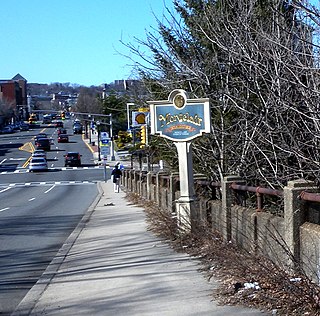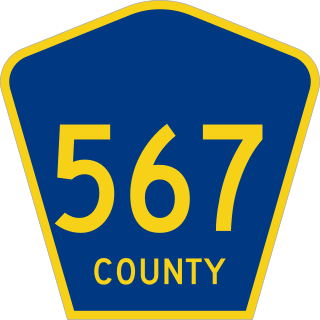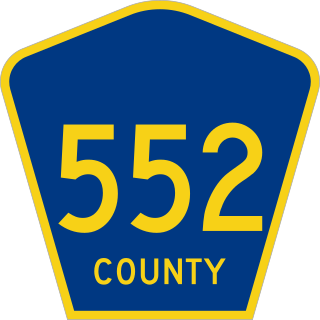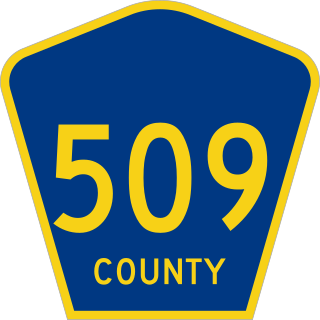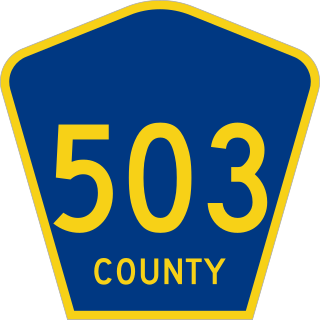| County routes in New Jersey | |
|---|---|
   Standard route markers | |
| Highway names | |
| County routes: | County Route X (CR X) |
| System links | |

In the U.S. state of New Jersey, county routes exist in all 21 counties. They are typically the fourth type of roadway classified below the Interstate Highway, the U.S. Route numbered highway and the state highway. The County Route system is defined by two types in New Jersey. First, 500 Series County Routes, also called state secondary routes (to the state highway), are county highways numbered in a statewide system with three-digit numbers that begin with 5. These roads form a second network of routes that supplement the facilitation of the State Routes. Each 500 Series route is unique and is not permitted to be duplicated in another county for a separate route. The second category is defined as Non-500 Series County Routes. Non-500 Series County Routes include 1-digit, 2-digit, 600 Series, 700 Series and 800 Series. These, by definition, are discontinuous across county borders and must be contained entirely within that county. Unlike 500 Series County routes, these route numbers are unique to each county, and are typically assigned to more local routes than the statewide 500-series county route system. They are typically of a lesser classification of streets like minor arterials or collector roadways rather than major arterials or thoroughfares. In the counties that use 600-series numbers, the selection of this range was coordinated within the state[ citation needed ], gradually replacing older systems of mainly one- and two-digit routes. [1]
Contents
With very rare exceptions (such as County Route 537), the 500 series follows the rule of cardinal direction used for Interstate Highways and U.S. Routes: even-numbered roads run east and west, while odd-numbered roads run north and south. East–west routes tend to be numbered with the lowest numbers in the northern part of the state and the highest numbers in the southern part of the state, also like the U.S. Routes. In northern New Jersey, north–south routes range from CR 501 in the east to CR 521 in the west, although numbering in the southern part of the state tends to be more haphazard.
County route numbers have not wholly replaced the preexisting names of the local roads to which they were assigned. Street signs at major intersections will denote both the local road name and the county route number if it has one. Residents who live along county routes rarely, if ever, give their address as "123 County Route 5xx" unless no name for the route has been established, as is the case in some rural areas.



